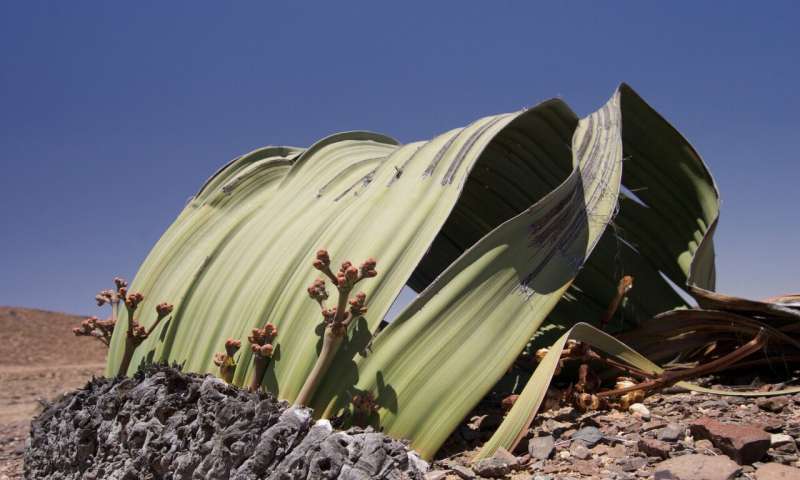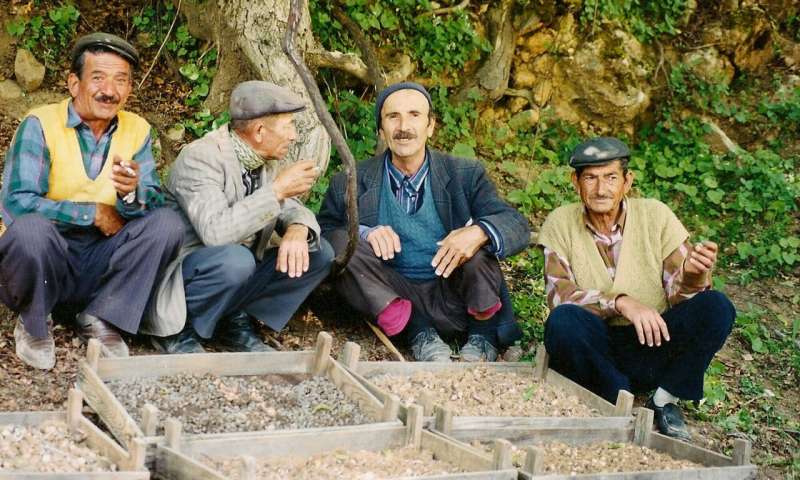Sowing the seeds – The past, present and future of plant conservation at FFI

You have to fast-forward almost 80 years from the origins of Fauna & Flora International (FFI) before you find any formal acknowledgement of our interest in things botanical, but plant conservation was on our agenda long before 'Flora' featured in our actual name.
As early as 1933, FFI president Lord Onslow chaired a historic conference that spawned a landmark document granting international protection to a list of animals and, for the first time, a named plant – the weird and wonderful Welwitschia.
As approaches to wildlife conservation became more sophisticated and holistic, the focus shifted from a narrow preoccupation with individual species to encompass broader habitats and even whole ecosystems. And with that shift came a growing awareness that plants are no less vital to the equilibrium of these ecosystems than the megafauna and mini-beasts.
Sir Peter Scott, that colossus among conservationists and one-time chairman and president of FFI, was among those rooting for plants in the 1960s. He encouraged Ronald Melville, a retired botanist from Kew, to begin compiling what amounted to a Red List of flowering plants. This Herculean task was taken over by IUCN and Kew under the umbrella of a Threatened Plants Committee. The appearance of the IUCN Plant Red Data Book in 1978 put flora conservation firmly on the world map, but it could only skim the surface, featuring a mere 1% of the estimated 25,000 threatened plant species.
Botanic guardians
Throughout the 1970s, FFI continued to fund small-scale plant projects, benefiting species as diverse as Mexican palms and cycads, a rare Vietnamese orchid, a CITES-listed tree fern from China, and bog plants in Venezuela. We even helped fund a Madagascar expedition in search of a close relative of the rosy periwinkle, famed for its cancer-treating properties.

In the absence of any other institution offering membership for those interested in global plant conservation, FFI stepped into the breach, and, in July 1980, changed its name to reflect that wider official remit.
The first work commissioned under FFI's new moniker was a study of the trade in mahogany (a catch-all label for over 20 different species of dark-red tropical hardwoods). The succinctly named Project Mahogany grew out of this investigation. Its main aims were to raise public awareness of the mahogany crisis, ensure better protection for forests containing mahogany, particularly in West Africa, and promote consumer use of sustainably grown tropical timber.
Growing commitment
In 1987, FFI began investigating the unsustainable harvesting of Turkish bulbs. At the time, Turkey was exporting 70 million bulbs annually, the vast majority sourced from wild populations. FFI pressed for stronger trade regulation and helped set up village-based nurseries. This sowed the seeds for the Indigenous Propagation Project, which supplied high-quality bulbs to international markets at a premium price and provided a long-term economic alternative for villagers formerly involved in collection. The scheme produced its first sustainably harvested crop in 1996 and was hailed as a resounding success.
The success of this initiative led FFI to broaden its remit in Turkey, identifying and recommending appropriate protection measures for other botanically significant areas. The Important Plant Areas project, as it became known, was probably the first in the world to use plant diversity to pinpoint habitats worthy of conservation at a national level.

Tree musketeers
A groundbreaking collaboration with the music industry in 1993 saw the launch of the Ebonies and Rosewoods project, designed to protect these threatened timber species from unsustainable logging. Its name was soon changed to SoundWood, in order to reflect the inclusion of other tree species vulnerable to overexploitation by musical instrument manufacturers, including the African blackwood.
FFI was the first conservation organisation to take an active interest in this species. Known locally as mpingo, this tree is highly prized for its dark, lustrous heartwood – one of the most valuable timbers in the world – and was under severe pressure from overharvesting until FFI intervened to prevent its commercial extinction.
As the scope and ambition of FFI's tree conservation work broadened, SoundWood metamorphosed into the Global Trees Campaign, which is managed in partnership with Botanic Gardens Conservation International. Officially launched in 1999, it remains the only international programme dedicated to safeguarding the world's 10,000 threatened tree species, almost 2,000 of which face the very real prospect of extinction unless urgent action is taken to save them.
The campaign focuses on trees as flagship species for the conservation of landscapes and ecosystems, encouraging and empowering local communities to develop appropriate in situ protection measures. It also recognises that individual tree species may require very specific conservation attention that they would not receive as part of broader forest protection initiatives.
Through the Global Trees Campaign, FFI continues to devise imaginative solutions to the problem of safeguarding threatened species across the globe, supporting tree conservation in more than 25 countries, including magnificent magnolias in China, Madagascar's mystifying baobabs, enigmatic conifers in Vietnam, Kyrgyzstan's wild fruit and nut trees, and the charismatic candelabra trees of Brazil's beleaguered Atlantic Forest.
Looking ahead, FFI is more determined than ever to make plant protection a central plank of its strategy. As well as continuing to incorporate flora into our conservation plans at existing project sites, we will be actively targeting other locations precisely because they are crucial refuges for particular threatened trees and other plants. Emergency intervention on behalf of species in urgent need will remain a vital facet of our work, but continual firefighting is not a sustainable solution. We have a long-term vision of restored landscapes that are ultimately self-sustaining and preclude the need for ongoing intervention.
Provided by Fauna & Flora International




















